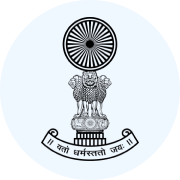Judiciary Exams Exam > Judiciary Exams Notes > Civil Law for Judiciary Exams > Hindu Undivided Family
Hindu Undivided Family | Civil Law for Judiciary Exams PDF Download
The Hindu Undivided Family (HUF)

A Hindu Undivided Family (HUF) is a unique family structure recognized in India, primarily among Hindus, but also applicable to Buddhists, Jains, and Sikhs for tax purposes. Below are the key points regarding HUF:
- Automatic Creation: HUF comes into existence automatically within a Hindu family, without the need for a contract. It comprises a Karta (the eldest male member) and coparceners (descendants).
- Role of Karta: The Karta manages the family's affairs and is responsible for obtaining a Permanent Account Number (PAN) and opening a bank account in the HUF's name for tax purposes.
- Taxation: HUF is considered a separate entity under the Income Tax Act of 1961 and is taxed as such. The tax slab rates applicable to individual income tax assessees also apply to HUFs.
- Legal Framework: HUF is influenced by Hindu law and is related to the Hindu Succession Act (1956) and the Hindu Marriage Act (1955). Members are lineal descendants of a common ancestor and include wives and unmarried daughters living together.
- Joint Family vs. HUF: The terms "Joint Family" and "Hindu Undivided Family" are synonymous. A HUF cannot be created by the act of parties, except in cases of reunion or adoption.
- Dynamic Nature: The size of a HUF changes with the birth of male members and the death of members. Females enter and exit the HUF through marriage.
- Dayabhaga and Mitakshara Schools: HUF is classified into Dayabhaga (prevalent in Bengal and Assam) and Mitakshara (followed in the rest of India) schools, which differ in the principles of property allocation and coparcenary rights.
- Dayabhaga School: In this school, coparceners do not acquire interest by birth. Their rights arise upon the father's death. The father has full control over the property during his lifetime.
- Mitakshara School: Coparceners acquire rights by birth and can demand partition. The property is not physically separated during a partition. There are four classifications under this school: Dravidian, Maharashtra/Bombay, Banaras, and Mithila.
- Important Judgements: Court cases, such as Attorney General of Ceylon v. Arunachalam Chettiar, have clarified the dynamics of joint family and coparceners within the Mitakshara School.
Question for Hindu Undivided FamilyTry yourself: Which school of Hindu law states that coparceners do not acquire interest by birth, and their rights arise only upon the father's death?View Solution
Differences between Dayabhaga and Mitakshara Schools
Dayabhaga School
- Geographical Area: Predominantly in Bengal and Assam.
- Coparcenary Rights: No coparcenary rights by birth. Sons acquire rights only upon the father's death.
- Father's Control: The father has full control over the property during his lifetime.
- Property Division: Property division occurs only after the father's death.
- Female Coparceners: Coparceners can be both males and females.
Mitakshara School
- Geographical Area: Prevails in the rest of India, except Bengal and Assam.
- Coparcenary Rights: Sons have coparcenary rights by birth and can demand partition.
- Father's Control: The father has control over the property, but sons have rights from birth.
- Property Division: Property can be divided at any time, and sons have exclusive rights by birth.
- Female Coparceners: Female members may have different rights and roles compared to males.
The document Hindu Undivided Family | Civil Law for Judiciary Exams is a part of the Judiciary Exams Course Civil Law for Judiciary Exams.
All you need of Judiciary Exams at this link: Judiciary Exams
|
363 docs|256 tests
|
FAQs on Hindu Undivided Family - Civil Law for Judiciary Exams
| 1. What is a Hindu Undivided Family (HUF) and its significance in Hindu law? |  |
Ans.A Hindu Undivided Family (HUF) is a legal entity recognized under Hindu law, comprising individuals who are lineally descended from a common ancestor. It is significant as it allows for joint family property management, which can provide tax benefits and facilitate the inheritance of property according to Hindu traditions.
| 2. What are the main differences between the Dayabhaga and Mitakshara schools of thought regarding HUF? |  |
Ans.The primary difference between Dayabhaga and Mitakshara schools lies in their approach to inheritance and property rights. In the Mitakshara school, property is held jointly by the family, and all male members have equal rights by birth. In contrast, the Dayabhaga school allows for individual ownership, where property is inherited by will and passed down only after the death of the owner.
| 3. How does the concept of coparcenary differ in the Dayabhaga and Mitakshara schools? |  |
Ans.In the Mitakshara school, coparcenary is a fundamental concept where all male members of the family are coparceners by birth, sharing equal rights to ancestral property. In the Dayabhaga school, coparcenary does not exist; instead, property is divided only after the death of the owner, and females have equal rights to inheritance.
| 4. Can a woman be a coparcener in a HUF under the Mitakshara school? |  |
Ans.Under the traditional Mitakshara school, women were not considered coparceners and did not have the same rights to ancestral property as male members. However, recent legal reforms have allowed for daughters to be recognized as coparceners, granting them equal rights in the HUF.
| 5. What are the tax implications of forming a HUF? |  |
Ans.Forming a HUF can provide tax benefits as it is considered a separate entity for tax purposes. Income earned by the HUF can be taxed separately, allowing for the possibility of lower tax liabilities through the use of tax brackets and exemptions available to the family unit.
Related Searches
















